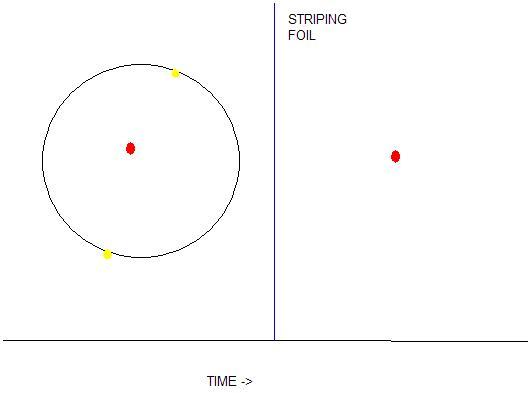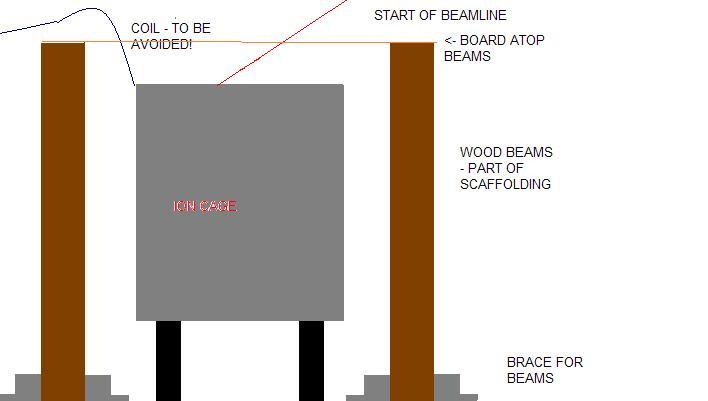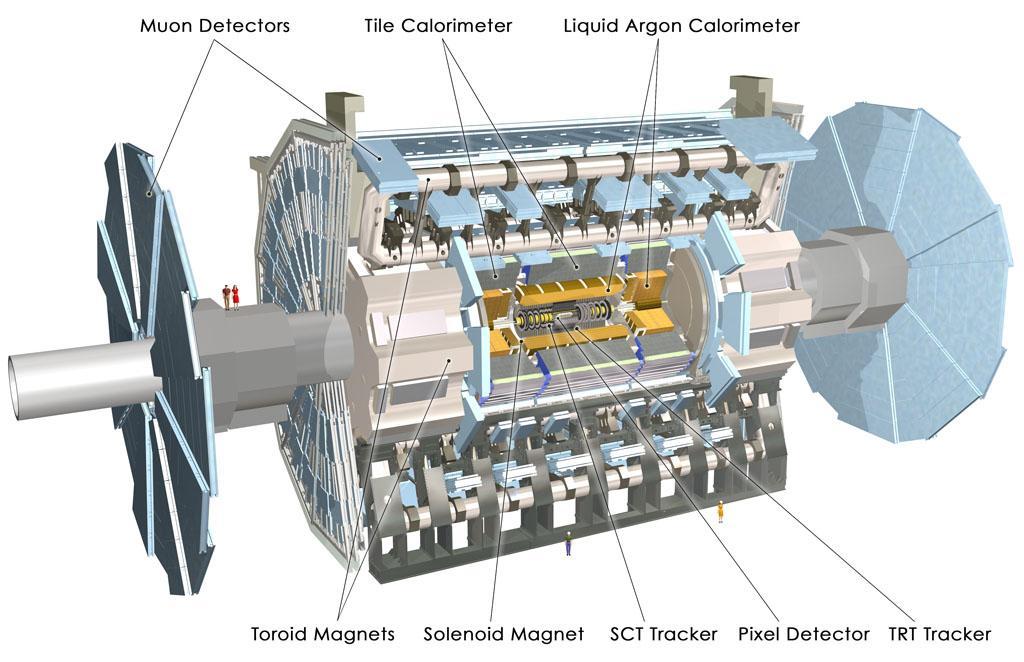Correction: It has been pointed out to me, by Curtis Ballard, that the stripping of electrons doesn't take place in the ion source. Another electron is added to hydrogen in the ion source, but the stripping occurs later in the cyclotron (with a stripping foil as described). Thanks to Curtis for pointing this out and keeping Dylon's Corner factually accountable.
Editor's Note: In his post this week, guest writer and visiting student Dylon Martin refers to a breakdown which occurred when both the program coordinator (Marcello) and his stand-in (Tim) went on holiday at the same time. Without his supervisors present, there was a scramble to connect Dylon with his new research group for the week.
There's one word that aptly describes my second to last week at TRIUMF: eclectic. A close competitor would have to be improvised. The week started off with Marcello Pavan on holiday and his counterpart Tim Meyer unaware of where I was to go. So, on the spot, it was decided I was to spend a day with TRIUMF's mechanical staff. Later, I wound up working with the ATLAS group and at week's end I helped out with TRIUMF's landmark 40th Anniversary Open House. Come to think of it, well rounded also comes to mind as an apt description!
I started my week with TRIUMF on Tuesday, right after BC Day, directionless. I had no idea where I was supposed to be; Tim's office didn't know either as he was out of town. So, I sat in the cafe for a little while, benefiting from the hospitality of its cafe staff and ended up spending the day with mechanical workers at TRIUMF.
Curtis Ballard, group leader for TRIUMF Site Maintenance Service, was kind enough to lead me to the ion source: this is where electrons are stripped from a hydrogen ion to produce single protons for experiments (another electron is added to the hydrogen atom before both are stripped away). Curtis graciously explained that fact to me.
Figure 1: Two electrons being striped from a hydrogen atom in an ion source.
TRIUMF's ion sources are very large metal (ion) cages, held above the ground by four ceramic "posts". The cages are held above the ground as a lot of electricity is used in the process of ionization (in this case, making hydrogen into a single proton). The chambers also have coils winding into them. During my time with the mechanical staff (I ended up spending two days there), I assisted in setting up scaffolding around an ion source. That's right, I got to see where it all (roughly) starts. Every experiment at TRIUMF depends on an ion cage. And it sure requires a lot of caution: the walls of the cage are filled with delicate electronics. If one were to push too hard or stand on the cage, thousands of dollars worth of equipment would be ruined. Building the scaffolding was a feat of caution because the wood and metal we were using could not touch the cage. I was working with Peter and Pierre, two very calm, friendly, and industrious mechanical workers. The first day I cut some iron which was used for bracing the scaffolding beams (Peter was impressed with the quality of my work).
The following day I lent a hand to Pierre and Peter as they maneuvered the various materials around the cage. Setting up the scaffolding frame involved a lot of very fine yet also very hard work, and when it was all said and done, the cage had been very neatly surrounded by scaffolding. Leaving the scaffolding project I felt a real sense of accomplishment and it was definitely a great experience.
Figure 2: The Scaffolding I helped build.
For the last two days of the week I spent my time with the ATLAS Canada group. ATLAS Canada is different from the other groups in that their equipment and data isn't at TRIUMF: it's in Geneva, Switzerland! ATLAS Canada has provided a component of the ATLAS detector to the Geneva-located Large Hadron Collider (LHC). This is why I haven't taken any photographs: every piece of equipment is in Europe (though, come to think of it, the ion chamber would've been a nice photograph...).
Isabel Trigger, a leading researcher for ATLAS Canada, was courteous enough to explain the whole purpose of LHC and the ATLAS detector to me. The ATLAS detector is aiming to find the Higgs Boson-one of the most elusive particles in nature. Physicists believe it exists, and for good reason: it gives mass to other particles.
When particles collide at very high speeds in the Large Hadron Collider, multiple new particles are produced and scattered into various places. The ATLAS detector measures the particle scattering into various places by surrounding the target particle (where the collision takes place). Depending on which layer of the detector the particle "penetrates", one can tell what type of particle it is (electron, muon, etc). From where the final particles scatter, physicists can calculate the initial particle's position, energy, and direction. If ATLAS is (very) lucky it will even find the Higgs Boson by calculating back!
Figure 3: The ATLAS detector with many devices for detecting different particles.
While with ATLAS Canada, I got to try some software designed to explain ATLAS to high school students. While the software was stunning to look at, it still had its set of bugs.
After two days I was done: my shortest stay with any group. It was still a great learning experience, where leading researchers took time out of their busy days to explain the basics to me and I'm very thankful for that.
Finally, to add yet another flavor to my week, I, along with many others, helped out with TRIUMF's Open House for their 40th anniversary on Saturday. The 40th anniversary was organized as a tour and, as a "shepherd", I stood at key points along the tour giving directions and answering questions about TRIUMF. Especially as the crowds became large, this work was demanding and rewarding. Once the tour closed, over 1300 had visited TRIUMF and I had the satisfaction of knowing that I played a (very) small part in the success TRIUMF's Open House.
My second to last week at the lab was very different: I saw TRIUMF in many ways. I learned how research, mechanical work, and public relations all come together to make TRIUMF the great place it is. In the end, I can only be cheerful to have had the privilege of such an insightful view.
By: Dylon Martin



